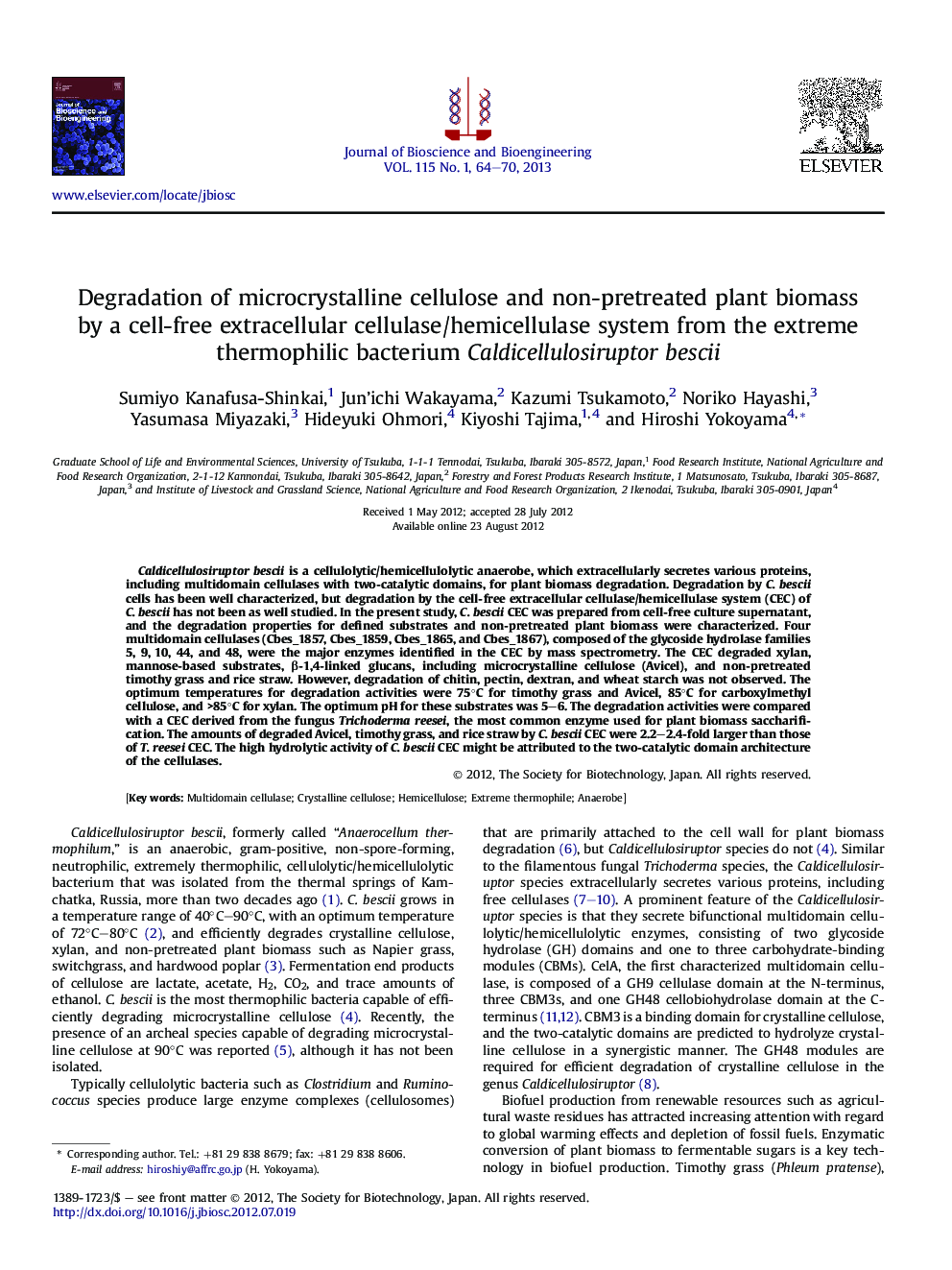| کد مقاله | کد نشریه | سال انتشار | مقاله انگلیسی | نسخه تمام متن |
|---|---|---|---|---|
| 20961 | 43199 | 2013 | 7 صفحه PDF | دانلود رایگان |

Caldicellulosiruptor bescii is a cellulolytic/hemicellulolytic anaerobe, which extracellularly secretes various proteins, including multidomain cellulases with two-catalytic domains, for plant biomass degradation. Degradation by C. bescii cells has been well characterized, but degradation by the cell-free extracellular cellulase/hemicellulase system (CEC) of C. bescii has not been as well studied. In the present study, C. bescii CEC was prepared from cell-free culture supernatant, and the degradation properties for defined substrates and non-pretreated plant biomass were characterized. Four multidomain cellulases (Cbes_1857, Cbes_1859, Cbes_1865, and Cbes_1867), composed of the glycoside hydrolase families 5, 9, 10, 44, and 48, were the major enzymes identified in the CEC by mass spectrometry. The CEC degraded xylan, mannose-based substrates, β-1,4-linked glucans, including microcrystalline cellulose (Avicel), and non-pretreated timothy grass and rice straw. However, degradation of chitin, pectin, dextran, and wheat starch was not observed. The optimum temperatures for degradation activities were 75°C for timothy grass and Avicel, 85°C for carboxylmethyl cellulose, and >85°C for xylan. The optimum pH for these substrates was 5–6. The degradation activities were compared with a CEC derived from the fungus Trichoderma reesei, the most common enzyme used for plant biomass saccharification. The amounts of degraded Avicel, timothy grass, and rice straw by C. bescii CEC were 2.2–2.4-fold larger than those of T. reesei CEC. The high hydrolytic activity of C. bescii CEC might be attributed to the two-catalytic domain architecture of the cellulases.
Journal: Journal of Bioscience and Bioengineering - Volume 115, Issue 1, January 2013, Pages 64–70